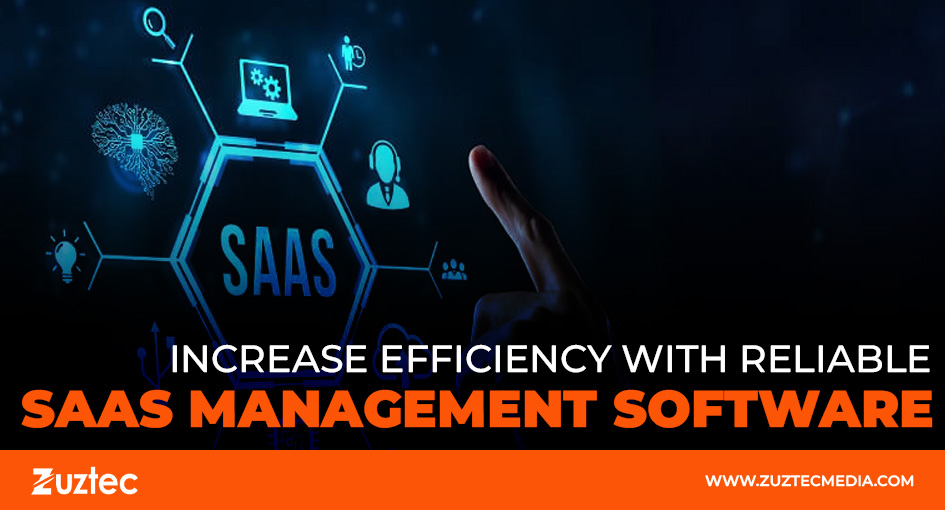
Increase Efficiency With Reliable SaaS Management Software
As more businesses move their operations to the cloud, managing multiple software-as-a-service (SaaS) tools becomes increasingly challenging. From subscriptions and user access to security and compliance, the more SaaS apps a company uses, the harder it becomes to keep everything organized and cost-effective. This is where investing in the right SaaS management software can make a big difference. With the right strategy in place, organizations can streamline workflows, avoid wasted spending, and ensure better software control.
For small and large companies alike, SaaS has transformed the way work is done. However, this new model brings complexity, especially when teams start using dozens or even hundreds of SaaS products. Without proper oversight, businesses can lose track of which tools are being used, how much they’re spending, or whether security policies are being followed. That’s why choosing and implementing smart management software is more important than ever.
Instead of manually handling every subscription or relying on spreadsheets, management platforms allow IT teams and procurement departments to automate tracking, improve visibility, and optimize performance. In this article, we’ll explore what this software does, the key features to look for, common challenges it helps solve, and how it supports a better digital environment across an entire organization.
Understanding The Role Of SaaS Management Software
It is designed to monitor, control, and optimize cloud-based applications across an organization. It gives IT departments the ability to view all SaaS applications in one place, track user access, monitor spending, and ensure security compliance. For companies with remote teams or decentralized operations, it plays an even more critical role.
Most businesses use dozens of SaaS apps, ranging from project management and CRM to communication and HR tools. Without oversight, these platforms can overlap, remain unused, or become security liabilities. A management platform helps prevent these issues by offering real-time data on usage and access. It ensures that licenses aren’t going to waste and that users are only accessing the tools they need.
Another advantage of using this software is centralized control. Instead of every department managing its tools, IT teams can oversee the entire ecosystem. This leads to better vendor negotiations, more consistent renewals, and greater visibility into performance and risk. With cybersecurity becoming a top concern, being able to monitor who has access to sensitive tools is essential.
Top Features That Make These Tools Valuable
The best SaaS management platforms come equipped with a range of features designed to simplify software tracking and control. One of the most important is license optimization. With this function, businesses can automatically detect unused or underutilized licenses and reallocate them, cutting down on wasted spending.
Another key feature is integration with existing systems. Most tools can connect with popular HR and identity management platforms to streamline user provisioning. This is particularly helpful when onboarding or offboarding employees, ensuring that each team member has the right access at the right time.
Security and compliance tools are also standard. These help monitor risky behaviors, enforce access controls, and create automated alerts for suspicious activity. Some platforms even support single sign-on (SSO) and multi-factor authentication (MFA) integration for added protection.
Common Challenges Solved By SaaS Management Tools
Without centralized management, organizations often struggle with shadow IT—the use of unauthorized software by employees. This not only creates confusion but also introduces security risks. Management tools can detect these apps and help decide whether they should be officially adopted or eliminated.
Finally, collaboration between departments often suffers when there’s no unified software strategy. With centralized dashboards and reporting, every stakeholder—from procurement to leadership—can understand the current software landscape and make better decisions. By addressing these issues, saas management software supports cleaner operations and stronger business continuity.
Choosing The Right Platform For Your Needs
Selecting the right SaaS management solution depends on your company’s size, existing tools, and specific goals. For small businesses, a lightweight platform with basic tracking and license control might be enough. For large enterprises, features like security monitoring, advanced integrations, and contract management are likely to be essential.
Start by mapping out your current software environment. Identify how many tools you’re using, who manages them, and what your main challenges are. This audit will help you determine what kind of platform you need and which features to prioritize.
Consider platforms that integrate easily with your current tech stack. If you use a certain HR system or identity provider, make sure your SaaS manager can connect seamlessly. Also, check for scalability—your needs may grow over time, and your platform should grow with you.
Conclusion: Long-Term Value Of SaaS Management
As your company continues to grow, so will the number of software tools in use. Keeping them organized and cost-effective is key to scaling efficiently. That’s why investing in the right saas management software now can lead to major benefits in the future.
By centralizing control, improving security, and cutting down on wasted spending, these tools provide ongoing value across departments. More than just a tracking system, they become part of your overall digital strategy—supporting better collaboration, stronger compliance, and smarter decision-making.

